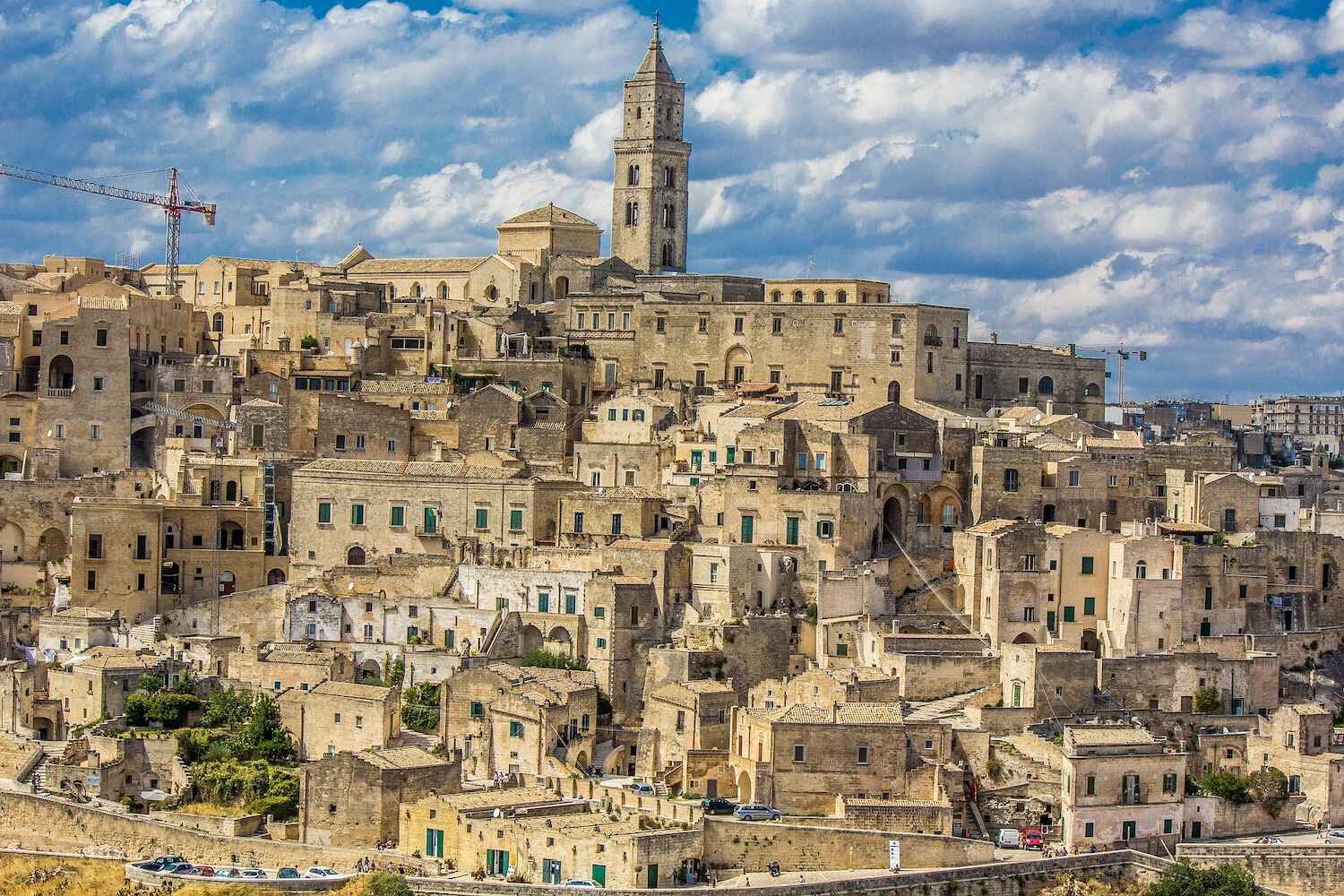Little known even by Italians, the Basilicata region is one of the best areas to discover Italy off the beaten path. Get ready for unspoiled landscapes, delightful hilltop towns where time seems to have stopped, and genuine people proud of their longstanding traditions.
Where is Basilicata?

If you’re familiar with Italy’s geography, you’ll know the country has the shape of a boot. The Basilicata region is right before the tip and the toe and borders Campania (the area of Naples), Puglia, and Calabria.
Map of Basilicata

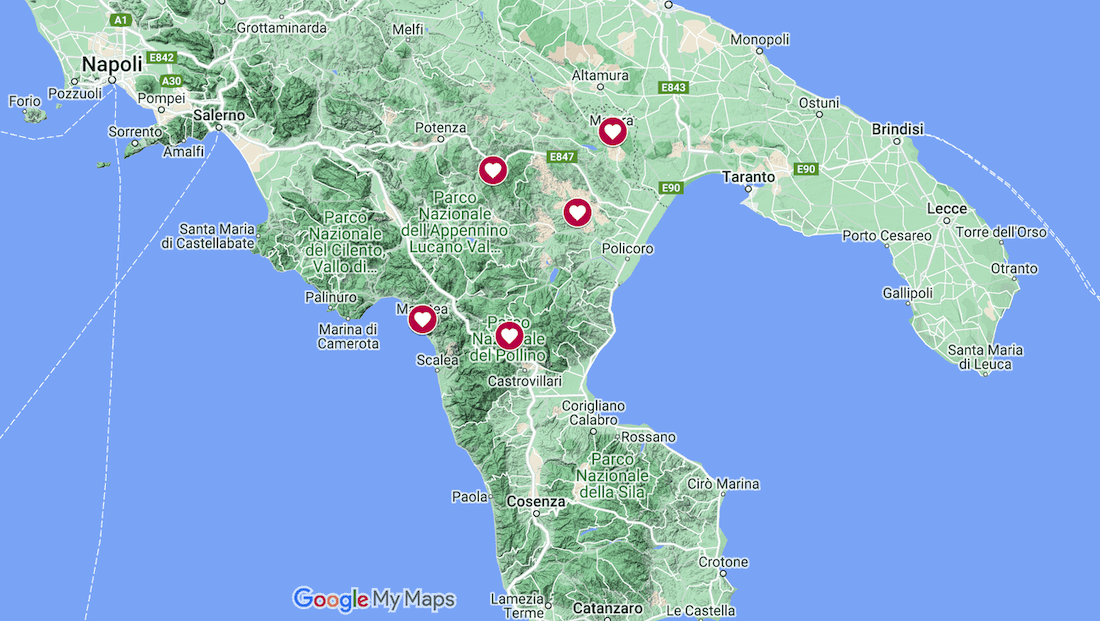
An overview of the region Basilicata

Basilicata is southern Italy’s second smallest region after Molise. Geography deeply affected its development: most of its surface is covered by mountains and hills, with plains accounting for only 8%. As a result, public transportation is limited, making access to the Basilicata region difficult and time-consuming. The accessibility of the short coastlines on the Tyrrhenian and Ionian seas has improved slightly in recent years, resulting in a slight increase in tourism in the few seaside resorts.
Basilicata as a filming location

Basilicata came into the limelight only recently, thanks to the Italian film industry first and then Hollywood. The lunar landscape of the badlands, the surreal atmosphere of Craco ghost town, and the stunning architecture of Matera with its cave dwellings were chosen as locations for King David (1984, with Richard Gere), Mel Gibson’s controversial film The Passion of the Christ (2004) and as a backdrop for a few scenes of Quantum of Solace (2008), to mention only a few movies.
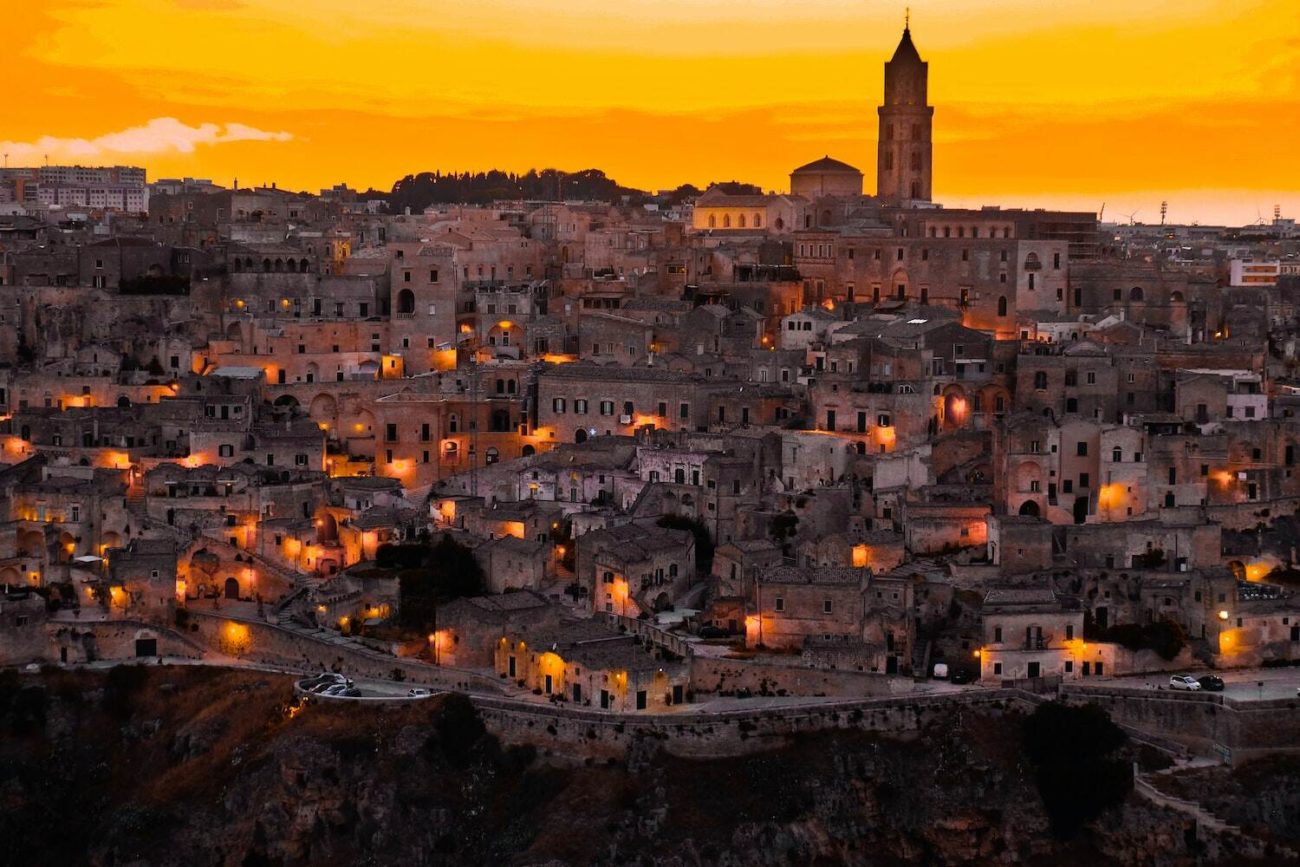
Francis Ford Coppola followed the footsteps of his grandfather, who was born in the Basilicata region and, like many others, immigrated to the United States. In Bernalda, the birthplace of his grandpa Agostino, Francis Ford Coppola bought Palazzo Margherita, a beautiful house of the late 19th century, which he transformed into a luxury boutique hotel, opened in 2012 after being the setting for his daughter Sofia’s wedding.
I had the privilege of visiting Palazzo Margherita, enjoying a delicious lunch in the lovely courtyard and strolling in the lush garden. The hotel is an oasis of peace, and I can easily imagine why wealthy people would want to spend a few days in one of the nine suites. If you are curious about Palazzo Margherita and the prices, you can have a look here (keep in mind that it’s open only from mid-April to the end of October).
Basilicata, a trip to discover authentic Italy

Forget the luxuriant hills of Tuscany, the aristocratic palaces of Venice, or the magnificent Rome. The beauty of the Basilicata region is all but ostentatious. Its charm is in its authenticity.
The longstanding isolation and remoteness made for one of the poorest areas of Italy, but it’s also what preserved Basilicata’s uniqueness, what makes it so different from other Italian regions. If you want to discover Italy off the beaten path, look no further: the Basilicata region is the place to go.
Best places to visit in Basilicata

Although tourism increased in recent years, a classic tour of Italy rarely includes Basilicata. The region Basilicata remains a destination for cultivated travellers willing to discover off-the-beaten-track Italy.
Besides Potenza and Matera, the only cities, the Basilicata region mostly comprises small towns and villages. It’s mainly in these latter that you’ll savour the authentic Italian flavour of this area. You’ll hardly find restaurants for tourists, menus in multiple languages, or streets lined with tacky souvenirs.
Smiling locals will often welcome you, grateful for your interest in their region.
Matera, Basilicata Region’s jewel in the crown

Basilicata’s most popular destination is by far Matera (though I suspect that not many know it’s located in Basilicata). Matera is famous for ‘I Sassi’, the cave dwellings of prehistoric origins declared a UNESCO World Heritage Site in 1993 for being the most outstanding human prehistoric settlement in the Mediterranean area and likely one of the first human settlements in Italy.
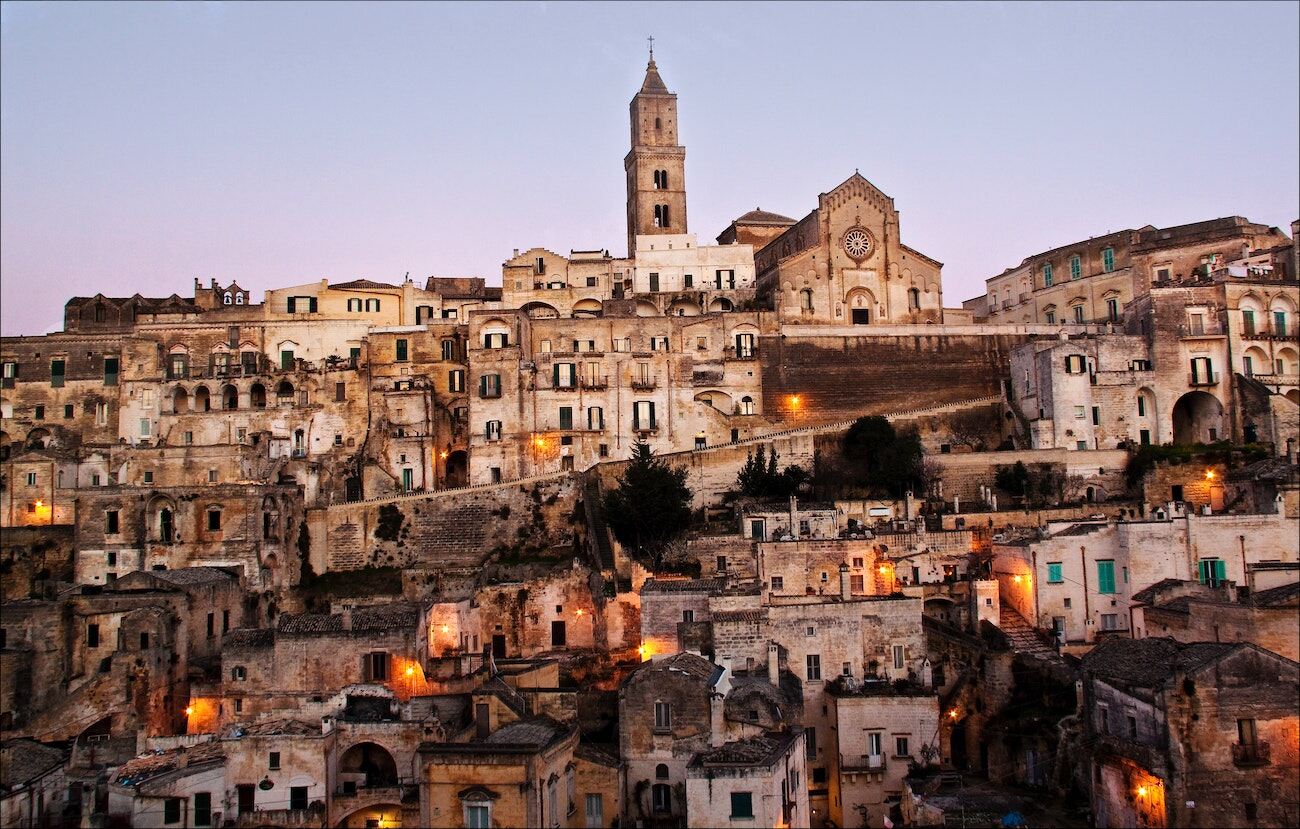
Matera’s renown increased in 2019 when the city was proclaimed the European Capital of Culture. Tourism increased steadily over the last few years, also boosted by the relative proximity to Puglia’s Bari airport. Many people travelling in northern Puglia include Matera in their itinerary.
Breathtaking. I can’t think of a better word to describe this unique city. Matera’s golden-white tuff houses and meandering alleys are charming. And its beauty is also in its setting, the surrounding green and yellow vegetation.
Start your visit from the upper old city, where you can see the beautiful cathedral – from where you get superb views – and other interesting buildings. Walk down toward the old city’s lower part by getting lost in the maze of alleyways, relishing the many picturesque corners. Wander in the streets of the Sassi, the ancient caves where people lived in extreme poverty until the 1950s. Some have been refurbished and transformed into hotels, art spaces and restaurants. Others are empty and retain their original structure.
Don’t miss some of Matera’s best viewpoints to enjoy stunning sweeping views of the city. You can easily find two of the best belvedere in Piazza Vittorio Veneto and the panoramic terrace near the Church of Sant’Agostino.
For most people, visiting Basilicata means spending one or two days in Matera as an extension from the Puglia region. But while Matera is unquestionably a must-see in Italy, there’s much more to the Basilicata region which is worth exploring.
Maratea, Pearl of the Tyrrhenian Sea

Atop the hill dominating the jagged coastline, the white Christ of Maratea brought my memories back to Rio de Janeiro and Brazil. From here, the view of the sea is breathtaking. There’s no big city below, though. Maratea is a small town and the only one in the Basilicata region overlooking the Tyrrhenian Sea.
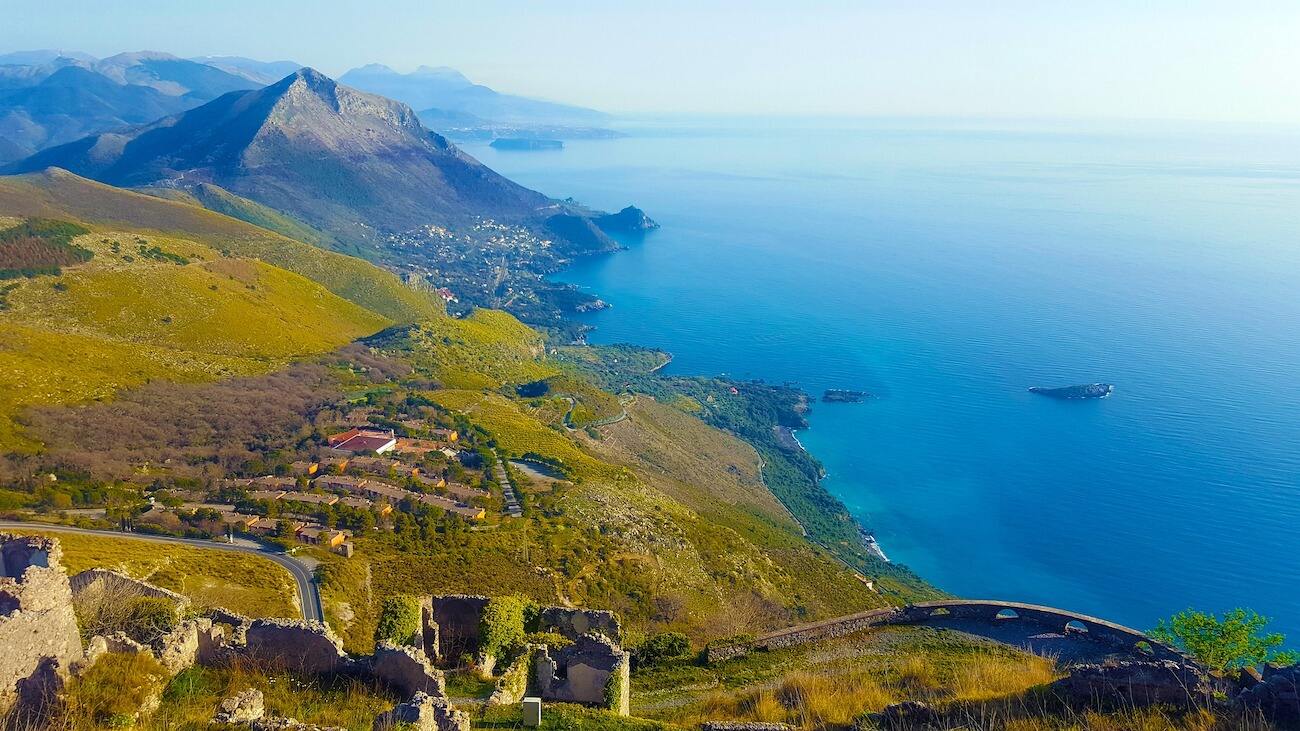
Although having only 32 km of coast, Basilicata boasts gorgeous glimpses of the Tyrrhenian sea. Jagged shores, little coves, turquoise and deep blue waters, and the waves breaking on the rocks. Maratea is strongly linked to my childhood. My father was from Calabria, the region bordering Basilicata from the south. When I visited my family by train, I always anticipated the moment I could glance at the wild coast and the crystal-clear water. Every time, I felt speechless looking at this breathtaking landscape, and for years I dreamed of visiting Maratea one day.
It took me decades, but I eventually discovered the “Pearl of the Tyrrhenian Sea”, as Maratea is often called. It’s a seascape like I love: wild and untamed, with the mountains almost falling in the water. A short but fabulous stretch of coast.
Castelmezzano: a picturesque village with a stunning scenery

Nestled against the steep rocks of the Dolomiti Lucane, Castelmezzano is one of the most picturesque towns you can think of. The medieval village sits 750m above sea level amid magnificent scenery. The arrival in the town is spectacular. After exiting a tunnel dug in the rock, Castelmezzano suddenly appears like a postcard, its beauty taking the breath away.
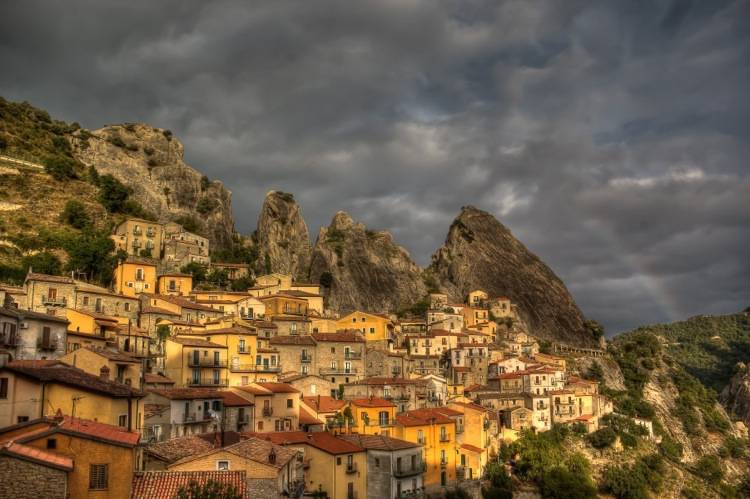
For a hamlet of about 700 residents, there are surprisingly many things to see and do in Castelmezzano. The best way to discover the village is by slowly wandering into the steep meandering alleyways, admiring ancient aristocratic palaces and old churches like Santa Maria dell’Olmo and the Chapel of the Santo Sepolcro. And, of course, you should take a break at the scenic spots to appreciate the beautiful landscape.
Castelmezzano is more than just a charming village. Thanks to its privileged position in the heart of the Lucanae Dolomites, it offers plenty of activities to choose from. Hiking, climbing, vie ferrate, mountain biking, snowshoeing. If this was not enough, adrenaline seekers should not miss the Volo dell’Angelo. This unique zip line connecting Castelmezzano to the nearby village of Pietrapertosa and back, can reach a speed of up to 120km/h. The thrill is guaranteed, and you can even experience the Volo dell’Angelo in tandem.
Craco, an enthralling ghost town

Perched on a hill overlooking the badlands, the ghost town of Craco is one of the most fascinating spots of the Basilicata region.
As the car drove through the wild and lunar landscape of the Valle del Cavone, it seemed as if here time stood still, and it somehow had.
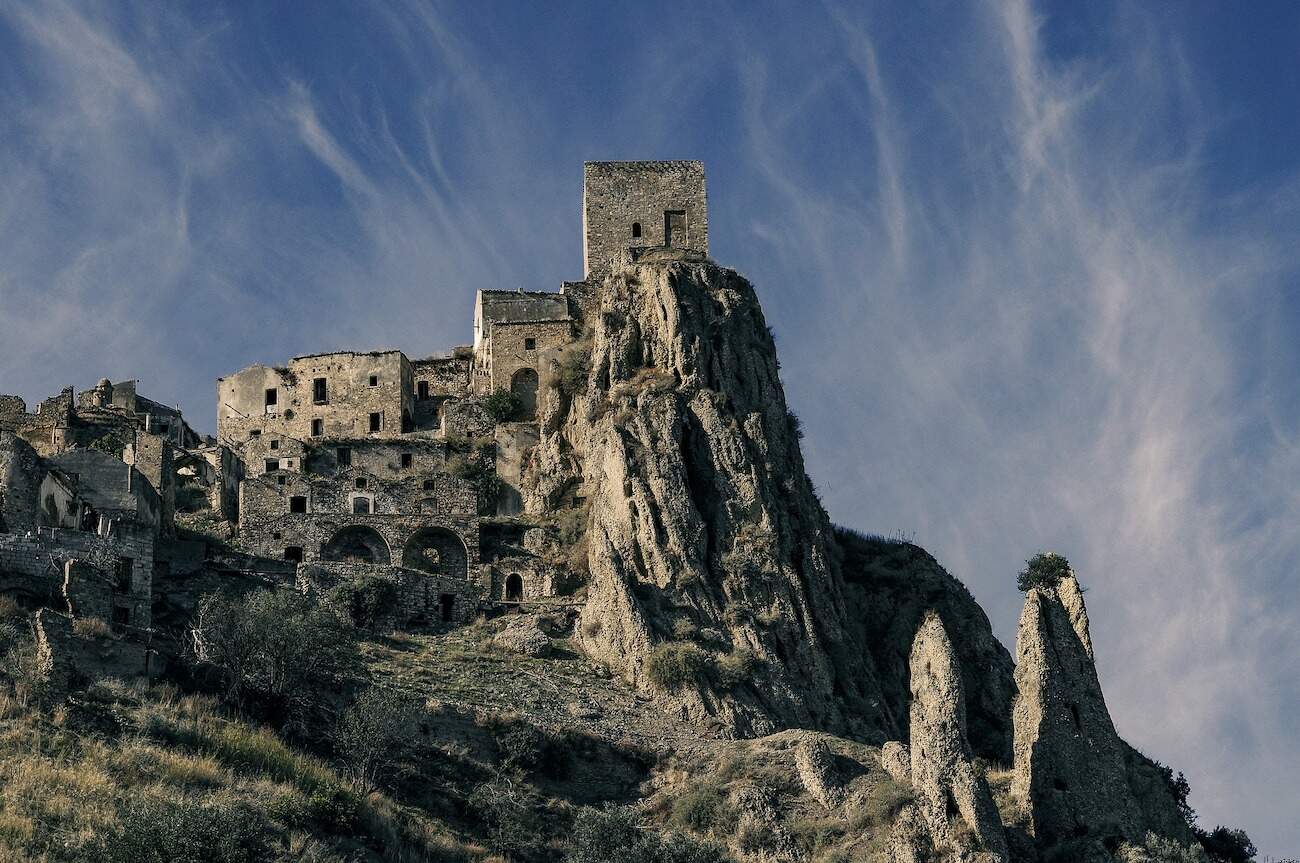
The evacuation of Craco began in 1963 after several landslides destroyed part of the buildings. Part of the residents stayed. But as living in the crumbling houses became increasingly dangerous, in 1975, people had to abandon the village and Craco became a ghost town.
When I visited Craco, the view of the ruins standing out on the blue sky was enthralling, and the atmosphere seemed surreal. Along the empty narrow streets, opened windows were like frames containing a snapshot of the surrounding landscape. Some houses still hold traces of the life that once was: old appliances, abandoned tools, a lonely chair in the middle of a room where no one will ever sit anymore. A few facades still show their past beauty in what’s left of their decorations.
Haunted, surreal and moving, it’s not surprising that Craco ghost town and the beautiful surrounding landscape became the setting for several movies such as Mel Gibson’s The Passion of the Christ and 007 Quantum of Solace. Therefore, on a trip to the region Basilicata, don’t miss seeing Craco and its haunted, moving beauty.
Pollino National Park and its unspoiled beauty

Stretching between Basilicata and Calabria, Pollino National Park is mesmerizing. A paradise for trekking, biking, and outdoor lovers, its landscape is stunning and largely unspoiled. Pollino is an area you should visit even if active travel is not your thing. Indeed, there are several charming villages where you can wind down, enjoying the typically slow pace and the local life. Among them is Viggianello, the hilltop town in the list of the Borghi più Belli d’Italia (the most beautiful towns in Italy). The Pollino National Park is also an excellent idea if you want to explore a few of the charming villages in northern Calabria.
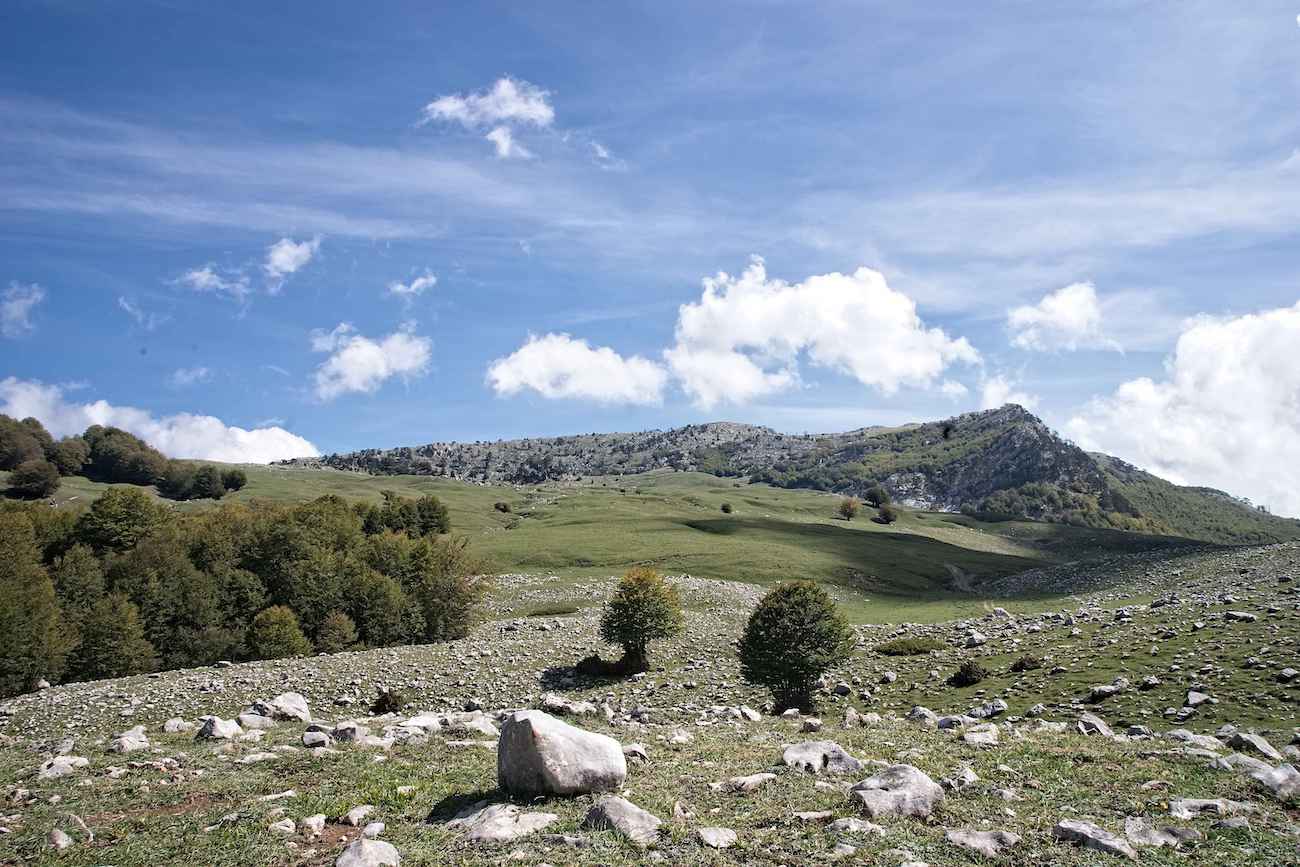
The hamlets are also excellent for tasting traditional dishes prepared with local (and exquisite) ingredients. A must is having peperoni cruschi, a typical dish of the Basilicata region, made of sweet, red capsicum carefully dried. Locals eat them as an appetizer (crispy, they replace chips), as a side dish or use them in typical preparations to enhance the taste.

Useful information on the region Basilicata

How to get to Basilicata
The three nearest international airports are:
- Bari, in Puglia, the best airport to reach Matera. From Bari Airport, you can also book a private transfer to Matera.
- Napoli, in Campania, is to be preferred for Maratea and western Basilicata
- Lamezia Terme, in Calabria, is the best airport to get to the Pollino National Park.
Getting around in Basilicata
It’s hard to rely on public transportation in Basilicata. And a journey often implies travelling by a combination of train + bus to get to your final destination. The recommended way to explore Basilicata is by hiring a car. That way, you can discover the area at your own pace.
Check out the best car rental options
Matera tours from Puglia
The easiest way to get a first taste of the region Basilicata is to visit Matera from Bari on a day trip. I bet you’ll want to get back and see more of this underrated Italian destination.
Accommodations in the Basilicata region

Although tourism is less developed than in other Italian regions, Basilicata offers a wide range of accommodations, from luxury hotels to simple guesthouses. There’s, of course, more choice in larger cities like Potenza and Matera or well-known towns like Maratea or Metaponto.
Where to stay in Matera
For a unique experience, stay at one of Matera’s cave hotels. You don’t have to break the bank, for there are options for every pocket.
- The charming guesthouse La Dimora delle 3 Zie, in the area of the Sassi di Matera, features lovely rooms in a refurbished cave dwelling. Great value for money for a special stay.
- Located in the Sassi, Hotel Sextantio Le Grotte Della Civita offers rooms and suites in large caves featuring stone floors and period furniture. The hotel also has a panoramic terrace overlooking the Murgia National Park.
- If you wish to treat yourself, look at the beautiful Sant’Angelo Luxury Resort. Housed in an ancient cave dwelling delightfully refurbished, it features rooms with contemporary design decor, all different from one another.
More accommodations in Matera
__________________
Note: This article contains affiliate links to a few selected products and services. That means that if you make a purchase, I get a small commission at no extra cost to you.
Pin for later!

